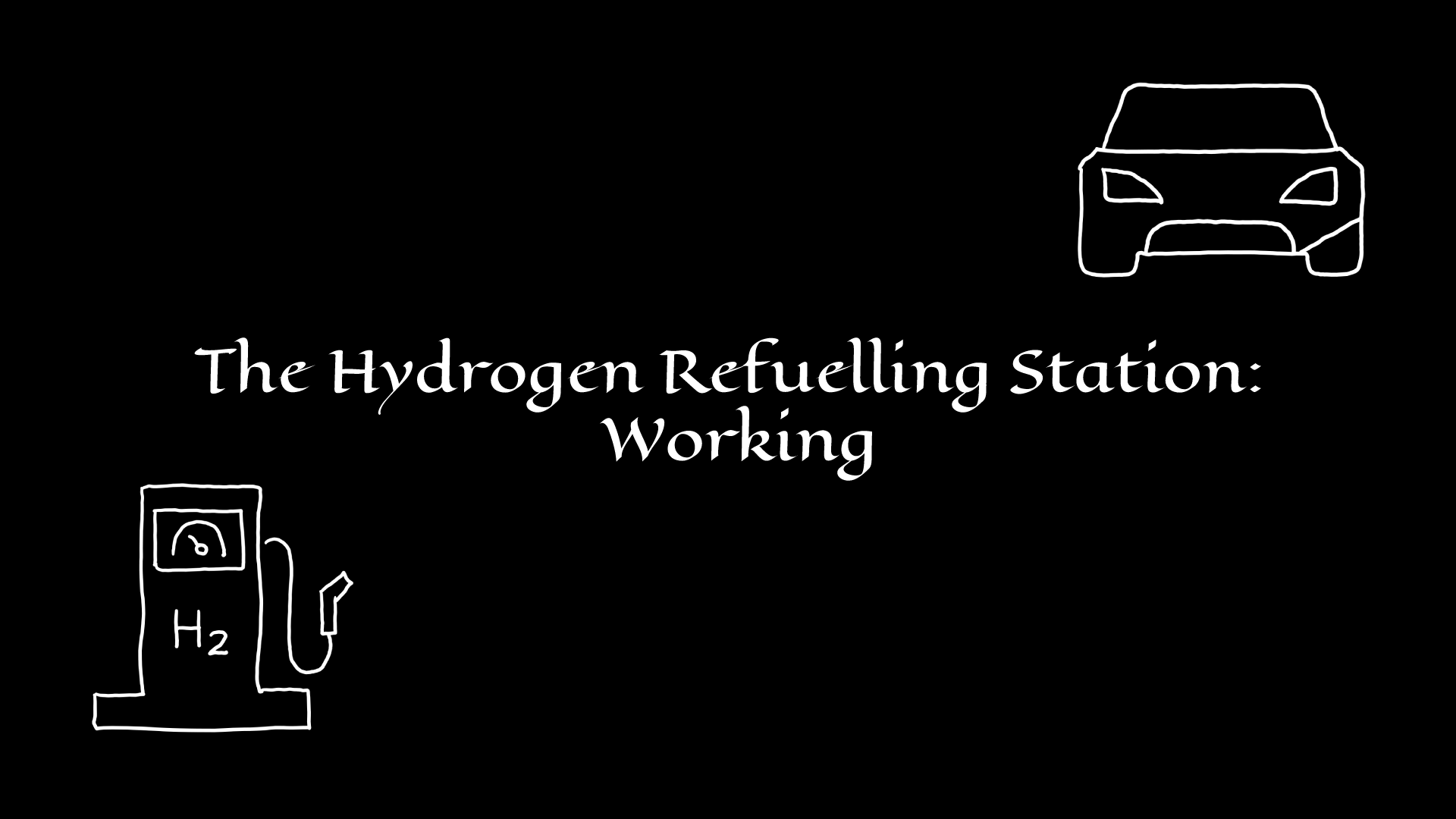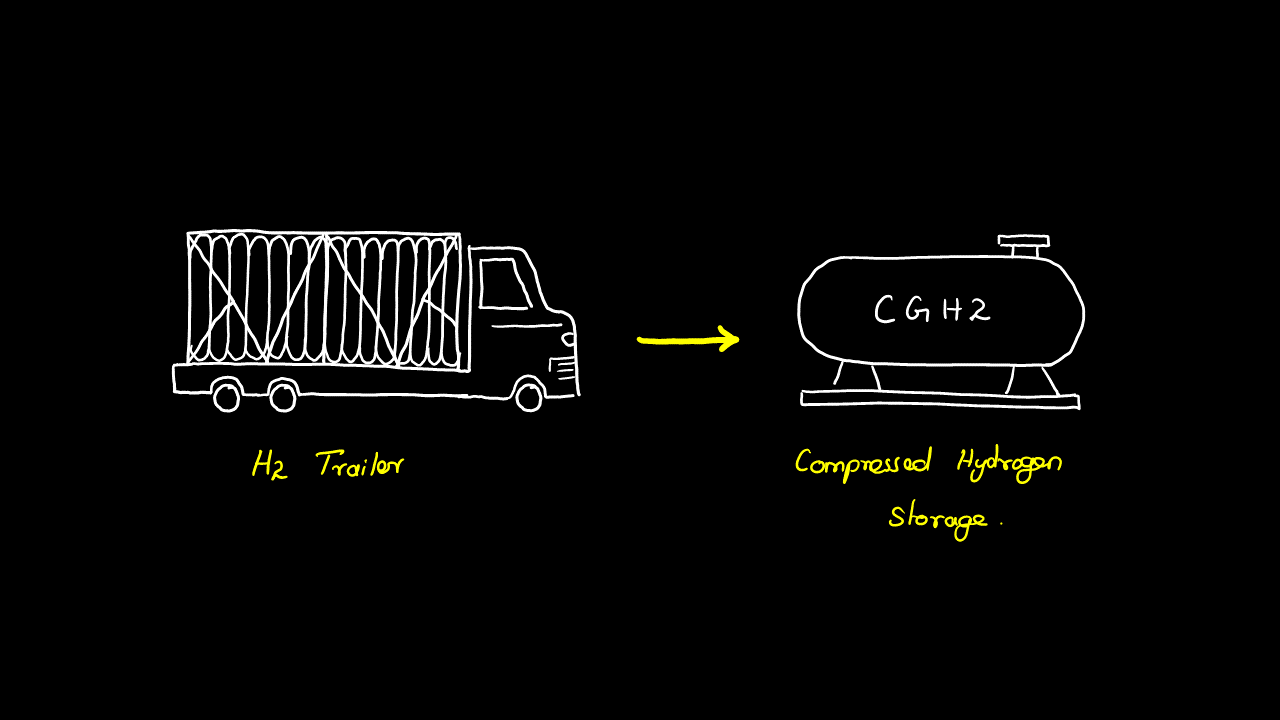Working principle of a HRS

When refuelling hydrogen from a hydrogen refuelling station there are a set of processes taking place between a hydrogen refuelling station (HRS) and the vehicle being refuelled.
Process 1:
The hydrogen is delivered to the hydrogen refuelling station and gets stored in the primary hydrogen storage.

Process 2:
The stored hydrogen is then compressed to the required filling pressure. This is done to increase the energy density of hydrogen.

Process 3
The compressed hydrogen is either filled directly to the vehicle tank or stored in a second buffer storage at the required filling pressure. This highly compressed hydrogen is then filled into the vehicle tank using a dispenser. A compressor with high dynamic delivery capacity must be used when directly filling the hydrogen from the compressor. This is an energy-intensive process as 7 to 13 % of the lover calorific value of hydrogen is used in the compression process i.e., 2.3 to 4.4 kWh/kg. According to the SAE J 2601 refuelling protocol, the temperature of the gas inside the vehicle tank should not exceed 85°C in order to prevent the tanks from thermal degradation. Hence it is necessary to pre-cool the hydrogen before refuelling to counter the temperature rise inside the vehicle’s fuel tank.

Refuelling hydrogen from a HRS
The refuelling of hydrogen vehicles from a hydrogen refuelling station is the same as that of the present refuelling system but smarter.
- A leak test is carried out at the beginning of the refilling process.
- Communication between the vehicle and the fuelling station takes place. This is done via an infrared interface.
- The infrared transmitter inside the vehicle transmits requires information like tank size, fill level, pressure and temperature.
- The Refill Data Interface (RDI) fixed at the nozzle of the dispenser receives this data and sends it to the refuelling station.
- The hydrogen is then filled into the vehicle tank and is aborted when the target pressure is reached.
- The fuel flow and filling level are calculated at the filling station using a hydrogen flow measuring meter. The filling process can be then aborted based on this information.
- In the event of this infrared communication failure, the filling process is done based on the table data mentioned in the filling protocol.
Refuelling hydrogen in Germany
In order to refuel hydrogen in Germany, a fuel card is necessary. This fuel card is to be obtained from H2 MOBILITY Deutschland GmbH which is responsible for the national development of hydrogen mobility infrastructure in Germany and was jointly founded by Air Liquide, Daimler, Linde, OMV, Shell and TotalEnergies. This card can be obtained online from the H2. LIVE platform developed by H2 MOBILITY Deutschland GmbH after taking part in an online seminar that explains step-by-step the refuelling process. The H2.LIVE platform also shows the number of hydrogen fuel stations active in Germany and also their respective location. When refuelling from a refuelling station this H2 MOBILITY card is inserted into a reader and acts as an authenticator for billing purposes. The card also stores all your refuelling information and billing data.
References:
- Overview Hydrogen Refuelling For Heavy Duty Vehicles. (n.d.). H2 MOBILITY Deutschland GmbH.
- Wasserstoff-Tankstellen. (2022). Linde Gas GmbH Österreich. https://www.lindegas.at/de/anwendungen/wasserstoff_technologie/wasserstoff_tankstellen/index.html
- Think Hydrogen. Think Linde. (2022). Linde Engineering. https://www.linde-engineering.com/en/hydrogen/index.html
- Hydrogen Stations | Fuel stations for hydrogen mobility. (2022). Haskel. https://www.haskel.com/en-de/products/hydrogen-refuelling/hydrogen-station
- Hydrogen fueling equipment. (2022). Nel Hydrogen. https://nelhydrogen.com/hydrogen-fueling-equipment/
- Wasserstoffanlagen | Air Liquide. (2022). Air Liquide. https://de.airliquide.com/unser-equipment/wasserstoffanlagen
- Federal Ministry for Economics Affairs and Climate Action. (2022). The National Hydrogen Strategy. https://www.bmwk.de/Redaktion/EN/Publikationen/Energie/the-national-hydrogen-strategy.html
- Design Considerations | Hydrogen Tools. (0). Indoor Refueling of Hydrogen-Powered Industrial Trucks. https://h2tools.org/bestpractices/design-considerations
- Li, S., Guo, J., Lv, X., Deng, T., Cao, B., & Wang, J. (2021). Research on High-Pressure Hydrogen Pre-Cooling Based on CFD Technology in Fast Filling Process. Processes, 9(12), 2208. https://doi.org/10.3390/pr9122208
- N.B. (2017). GKN’s Solid-state Hydrogen Storage System. GKN Powder Metallurgy. https://www.gknpm.com/globalassets/downloads/powder-metallurgy/2018/gkn-metal-hydride-based-hydrogen-storage.pdf/
- Friedrich, B. (2022). Hydrogenious LOHC Technologies - Wasserstoffhandhabung leicht gemacht. Hydrogenious LOHC Technologies. https://www.hydrogenious.net/index.php/de/hydrogen-2-3/
- Linde H2 refuelling technologies. (2021). Linde GmbH, Linde Engineering. https://www.linde-engineering.com/en/images/Tomorrows-fuel-today-Linde-H2-refueling-technologies_tcm19-632211.pdf